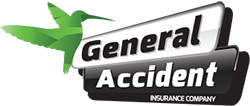Best Cars for New Drivers
The Importance of Choosing the Right First Car for New Drivers
Buying your first car is a thrilling milestone—one that brings both freedom and responsibility. While the excitement is undeniable, smart planning is essential. From safety and affordability to fuel efficiency and reliability, every detail matters. You’ll also need to factor in insurance and maintenance costs to avoid unexpected expenses. By researching a vehicle that aligns with your lifestyle and budget, you can make a well-informed choice, ensuring not just a great ride but a sound investment in your future.

Safety is paramount, especially for new or younger drivers. New drivers are more prone to accidents due to their inexperience. Therefore, safety should be a top priority. Cars with robust safety features such as automatic emergency braking, blind-spot detection, lane departure warnings, and stability control can provide additional protection. Additionally, a car that has performed well in crash tests would be a good choice. Vehicles that are too small might not provide enough protection in a collision, while vehicles that are too large can be challenging for a new driver to handle. Look for essential safety features such as:
- Anti-lock brakes (ABS)
- Electronic stability control (ESC)
- Traction control
- Advanced driver-assistance systems (ADAS) for added protection
Affordability and Insurance Costs: Key Considerations When Buying a Car
When considering the purchase of a vehicle, it’s crucial to think beyond the initial price tag. While the upfront cost of a car is an important factor, ongoing expenses such as fuel, maintenance, and insurance can significantly impact your budget over time. A holistic approach to vehicle ownership ensures you don’t stretch yourself financially. It helps you make an informed decision that is both practical and sustainable in the long run.
Setting a Realistic Budget
A good rule of thumb when buying a car is to allocate no more than 10% of your monthly income to transportation costs, which includes your car payment, insurance, fuel, and maintenance. For example, if you earn $3,000 per month, your total transportation expenses should ideally be under $300. This ensures that you aren’t overextending yourself and have enough room in your budget for other essential expenses like rent, food, and savings.
Additionally, if you have existing debt, such as student loans or credit card debt, it’s crucial to factor this into your car-buying decision. A larger debt load can make it harder to afford a car, especially if it results in high interest rates for loans or car payments. Evaluating your current financial obligations will help you determine the most affordable car for your situation.
The Role of Your Credit Score
Your credit score affects your vehicle loan’s interest rate, with a higher score leading to lower payments and overall loan costs. A lower score may result in higher rates, increasing monthly payments, and total expenses.
Insurance Costs: A Major Factor
Another essential cost to consider when purchasing a car is insurance. Insurance premiums can vary significantly depending on several factors, including your age, driving history, location, and the type of car you’re buying. Younger drivers or those with a less-than-perfect driving record tend to face higher premiums, as insurance companies view them as higher-risk drivers. However, your premiums should decrease over time as you gain more experience and maintain a clean driving record.
The make and model of the car you choose also play a role in determining your insurance premiums. High-performance or luxury vehicles often come with higher insurance rates because they are more expensive to repair or replace in the event of an accident. Conversely, more affordable vehicles with lower repair costs tend to have lower premiums.
Where you live can also significantly impact your insurance rates. If you live in an area with high traffic or crime rates, your premiums may be higher because of the increased likelihood of accidents or theft. On the other hand, rural areas typically have lower premiums due to less traffic and fewer crime incidents.
Maintenance and Fuel Costs
In addition to insurance, it’s essential to consider the long-term maintenance and fuel costs associated with your car. Some vehicles, while cheaper upfront, may have higher maintenance costs due to the complexity of their parts or the frequency of required repairs. Researching the reliability and maintenance history of the vehicle you’re interested in can help you avoid unexpected costs down the road.
Fuel efficiency is another consideration that can greatly affect your budget. While some cars may have a lower purchase price, their fuel consumption could be significantly higher, leading to greater long-term costs. Opting for a vehicle with good fuel economy can help reduce your monthly expenses and contribute to a more affordable overall ownership experience.
Fuel-Efficiency
For a new driver looking to get the most out of their first car, understanding why fuel-efficient driving matters can lead to long-term savings, a smoother driving experience, and a positive environmental impact.
Lower Fuel Costs
Simple driving changes can make a significant difference in fuel costs. By avoiding rapid acceleration, speeding, and unnecessary idling, you can lower your fuel consumption, which adds to actual savings, especially if you drive long distances regularly.
Extended Vehicle Longevity
Fuel-efficient driving habits, such as smooth acceleration and braking, reduce wear on vital car components like the engine, brakes, and tires. By minimizing stress on your car’s systems, you’re prolonging its lifespan and reducing the likelihood of costly repairs and premature replacements.
Reduced Environmental Impact
By driving more efficiently, you’re consuming less fuel, reducing emissions. This is crucial for reducing your car’s environmental footprint and contributing to cleaner air. It helps decrease the harmful gases released into the atmosphere, including CO2, which is a major contributor to climate change.
Increased Safety
Fuel-efficient drivers tend to adopt safer driving behaviors. By maintaining steady speeds, increasing following distances, and anticipating stops, you give yourself more time to react to changes in traffic and road conditions, reducing the risk of accidents. The result is a smoother, more controlled driving experience that benefits you and others on the road.
Maneuverability
Maneuverability is key in determining how easily a car handles various driving conditions. A well-designed vehicle should navigate curves and tight turns smoothly, offering responsive steering and stability. Acceleration is also important, ensuring seamless merging onto highways without hesitation or lag.
Parking ease is another crucial aspect—does the vehicle fit comfortably in standard parking spaces? Can it be parked effortlessly in crowded lots? Parallel parking should be straightforward for urban driving, with good visibility and steering precision. The front-end clearance is also important—does the bumper sit low enough to scrape against parking curbs?
In tight spaces, a vehicle’s turning radius determines whether a three-point turn can be executed efficiently. Compact cars tend to excel in these situations, while larger vehicles may require more effort. Overall, maneuverability affects daily driving convenience, making it an essential consideration when choosing a car.
Top 10 Cars for New Drivers in 2025
- 2025 Toyota Corolla | $23,310 USD
The Toyota Corolla is a practical, fuel-efficient car available in sedan and hatchback styles. While the base model may feel cramped and lacks advanced tech, it offers a comfortable ride and great fuel economy, making it one of the best value propositions.
Pros: Comfortable ride, good fuel efficiency
Cons: Cramped interior, outdated tech
Fuel Economy: 32/41 mpg - 2025 Nissan Kicks | $23,220 USD
The redesigned Nissan Kicks offers a sleek exterior, a new engine, and standard driver assistance features. Though it lacks some features of more expensive models, it provides a higher driving position than many small cars, making it appealing for those who prefer an SUV-like experience.
Pros: Stylish, strong engine, many driver aids
Cons: Limited features in the base model, no hybrid option
Fuel Economy: 31/36 mpg - 2025 Volkswagen Jetta | $23,220 USD
The Jetta provides good fuel efficiency and a spacious back seat. However, its updated styling and interior don’t significantly improve its performance or fuel economy compared to previous models.
Pros: Spacious back seat, affordable price
Cons: Lower fuel economy, subpar driving dynamics
Fuel Economy: 29/42 mpg - 2025 Kia K4 | $23,145 USD
With bold styling and ample interior space, the Kia K4 offers good value. However, its engine performance doesn’t match that of its more dynamic competitors, such as the Honda Civic.
Pros: Stylish design, spacious interior
Cons: Underwhelming engine performance
Fuel Economy: 30/40 mpg - 2025 Hyundai Elantra | $23,025 USD
The Hyundai Elantra stands out with its stylish exterior and great safety features. While its base engine is underpowered, the Elantra offers a solid blend of value, safety, and fuel efficiency.
Pros: Great safety ratings, good value
Cons: Slow engine, some cost-cutting in the interior
Fuel Economy: 32/41 mpg - 2025 Nissan Sentra | $22,730 USD
The Nissan Sentra offers a stylish design and strong safety features. However, its handling is mediocre, and rear passenger space is tight compared to rivals.
Pros: Strong safety suite, stylish
Cons: Mediocre handling, small rear seats
Fuel Economy: 30/40 mpg - 2025 Hyundai Venue | $21,795 USD (est)
The Venue is the cheapest SUV Hyundai offers, but it feels cheap inside with sluggish acceleration. Despite its compact size, it’s a great option for city driving and tight parking spaces.
Pros: Compact size, low price
Cons: Underpowered, basic interior
Fuel Economy: 29/33 mpg - 2025 Kia Soul | $21,665 USD
The Kia Soul offers ample interior space and a refined driving experience. While its engine is not fast, the Soul stands out for its unique design and practicality.
Pros: Spacious interior, good value
Cons: Limited engine performance,
Fuel Economy: 27/33 mpg - 2025 Chevrolet Trax | $21,495 USD
The Chevrolet Trax offers improved design and solid driving performance for its low price. However, its fuel economy is only average, and it lacks the sportiness of some rivals.
Pros: Stylish design, good value
Cons: Average fuel economy, lacks sportiness
Fuel Economy: 28/32 mpg - 2025 Nissan Versa S (Manual) | $18,330 USD
The Nissan Versa is the most affordable new car available for 2025, offering good fuel economy and a large trunk for its class. It’s basic but comfortable, ideal for those seeking a low-cost option.
Pros: Low cost, good trunk space
Cons: Slow acceleration, loud cabin
Fuel Economy: 27/35 mpg
These vehicles are all excellent choices for new drivers seeking an affordable, practical, and fuel-efficient car. While each car has pros and cons, they all offer good value, ensuring first-time car buyers can find a model that fits their needs and budget.
Insurance Considerations
Motor vehicle insurance is designed to protect against loss or damage arising from vehicle use, including third-party risks. Insurance providers offer various motor insurance policies to meet diverse consumer needs. These policies typically fall into two main categories: comprehensive and third-party coverage, with some policies also covering fire and theft.
Comprehensive insurance covers physical loss or damage to your vehicle caused by events such as accidents, fire, theft, and even civil disturbances. It also includes third-party liability, as required by law. The specific features and benefits of comprehensive insurance may vary between providers, so it is essential to understand what is included in the policy. Some insurers may offer additional coverage options, like protection against natural disasters, for an extra premium.
Third-party insurance, on the other hand, is mandatory under the Motor Vehicle Insurance (Third Party Risks) Act, and it covers liability for damage or injury caused to others while using your vehicle. There is also the option of a full third-party fire and theft policy, which includes fire and theft coverage in addition to third-party liability but does not cover damage to your vehicle. Understanding the different types of motor insurance and their specific terms can help you select the best coverage for your needs.


